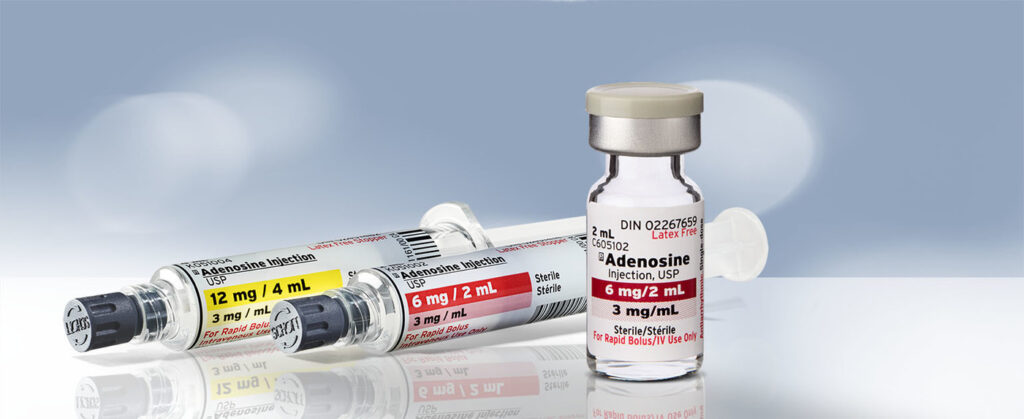Airway Aspiration in Emergency Medicine: Comparing the Effectiveness of Suction Catheters

Airway aspiration is a crucial skill in emergency medicine. Whether during a difficult intubation, facing a regurgitating patient, or in case of upper airway hemorrhage, the ability to quickly and effectively clear the airway can make the difference between life and death. However, not all suction devices are created equal. A recent study by Finke […]
The SALAD Technique: A Revolution in Contaminated Airway Management

Airway management in emergency situations remains one of the most critical challenges faced by emergency physicians. Among the most dreaded scenarios is the intubation of a patient with contaminated airways, whether due to vomiting, blood, or other secretions. In these situations, the SALAD (Suction Assisted Laryngoscopy and Airway Decontamination) technique emerges as an innovative and […]
Adenosine Administration Techniques: A Comprehensive Guide for Healthcare Professionnals

Adenosine is a crucial medication in the arsenal of cardiovascular emergencies, particularly for the treatment of paroxysmal supraventricular tachycardia (PSVT). Its effectiveness largely depends on its method of administration, due to its extremely short half-life (less than 10 seconds). This article explores in detail the different techniques of adenosine administration, their advantages, disadvantages, and practical […]
Optimizing Chest Compression Fraction in Cardiopulmonary Resuscitation: Strategies and Clinical Impacts

Cardiopulmonary resuscitation (CPR) is a crucial intervention in the management of cardiac arrest. Over the years, research has highlighted the critical importance of the quality of chest compressions in improving patients’ chances of survival. Among the key parameters of this quality, the chest compression fraction (CCF) has emerged as an essential indicator of CPR effectiveness. […]
CPR-Induced Consciousness: An Emerging Phenomenon in Cardiopulmonary Resuscitation

Cardiopulmonary resuscitation (CPR) is a crucial rescue technique in the management of cardiac arrest. Traditionally, it was considered that patients in cardiac arrest were unconscious during CPR. However, an emerging phenomenon known as “CPR-Induced Consciousness” (CIC) challenges this notion. This phenomenon, characterized by signs of consciousness observed in some patients during CPR, raises important questions […]
The Lazarus Effect: Mechanisms and Clinical Implications of Autoresuscitation

The Lazarus effect, also known as autoresuscitation, is a rare but well-documented phenomenon in medical literature. It is characterized by the spontaneous return of blood circulation (ROSC – Return of Spontaneous Circulation) after the cessation of cardiopulmonary resuscitation (CPR) efforts in cardiac arrest patients. This phenomenon, named after the biblical character Lazarus who was resurrected […]
Rapid Interventions Based on Patient Assessment Triagle Assessment

Here’s a reminder of the components of the Pediatric Assessment Triangle (PAT). For more information on the triangle, please refer to the article published on September 9, 2024, titled: The Pediatric Assessment Triangle: An Essential Tool in Emergency Care https://com-bos.ca/en/the-pediatric-assessment-triangle-an-essential-tool-in-emergency-care/ Components of the Pediatric Assessment Triangle Appearance Appearance is considered the most important […]
The Pediatric Assessment Triangle: An Essential Tool in Emergency Care

The Pediatric Assessment Triangle (PAT) The rapid and accurate assessment of a child’s health status in an emergency situation is a crucial skill for any healthcare professional working in a pediatric emergency department. The Pediatric Assessment Triangle (PAT) has become an essential tool in this field, offering a structured and efficient approach to quickly assess […]
Double Sequential External Defibrillation: A New Frontier in the Treatment of Refractory Ventricular Fibrillation?

Refractory ventricular fibrillation (VF) remains one of the most formidable challenges in cardiopulmonary resuscitation. Despite significant advances in the management of out-of-hospital cardiac arrests, some patients do not respond to standard defibrillation techniques, seriously compromising their chances of survival. In this context, new defibrillation approaches have emerged in recent years, particularly double sequential external defibrillation […]
Double Sequential External Defibrillation and Vector Change Defibrillation for Refractory Ventricular Fibrillation

Study Objective The objective of this study (DOSE VF) was to evaluate the effectiveness of double sequential external defibrillation (DSED) and vector change (VC) defibrillation compared to standard defibrillation in patients with refractory ventricular fibrillation during out-of-hospital cardiac arrest. Methodology Study Design: – 3-group cluster-randomized controlled trial with crossover – Conducted in 6 […]